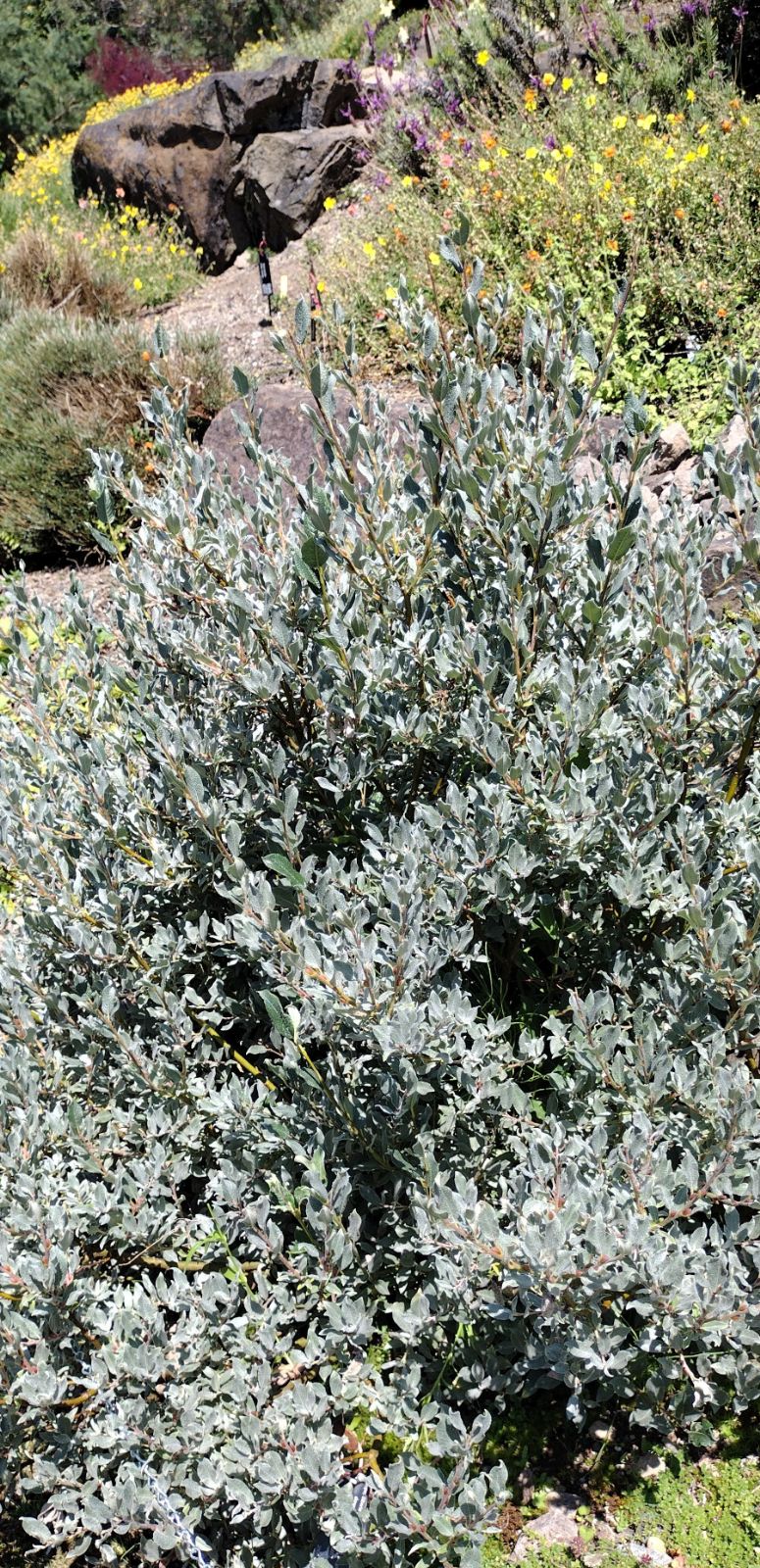Salix lapponum
Credits
Article from Bean's Trees and Shrubs Hardy in the British Isles
Recommended citation
'Salix lapponum' from the website Trees and Shrubs Online (treesandshrubsonline.
Genus
Other taxa in genus
- Salix aegyptiaca
- Salix alba
- Salix amygdaloides
- Salix arbuscula
- Salix arbutifolia
- Salix arctica
- Salix aurita
- Salix babylonica
- Salix bockii
- Salix 'Boydii'
- Salix caesia
- Salix candida
- Salix caprea
- Salix cinerea
- Salix cordata
- Salix daphnoides
- Salix discolor
- Salix elaeagnos
- Salix exigua
- Salix fargesii
- Salix fragilis
- Salix glabra
- Salix glaucosericea
- Salix gracilistyla
- Salix hastata
- Salix herbacea
- Salix hookeriana
- Salix humboldtiana
- Salix irrorata
- Salix japonica
- Salix jessoensis
- Salix lanata
- Salix lasiandra
- Salix lindleyana
- Salix lucida
- Salix magnifica
- Salix matsudana
- Salix × meyeriana
- Salix × mollissima
- Salix moupinensis
- Salix myrsinifolia
- Salix myrsinites
- Salix myrtilloides
- Salix nakamurana
- Salix nigra
- Salix nigricans
- Salix pentandra
- Salix petiolaris
- Salix phylicifolia
- Salix purpurea
- Salix pyrenaica
- Salix pyrifolia
- Salix repens
- Salix reticulata
- Salix retusa
- Salix rigida
- Salix × rubra
- Salix sachalinensis
- Salix scouleriana
- Salix × sepulcralis
- Salix × sericans
- Salix sericea
- Salix silesiaca
- Salix starkeana
- Salix × subalpina
- Salix triandra
- Salix uva-ursi
- Salix viminalis
- Salix wilhelmsiana
A shrub of spreading, much-branched habit, 2 to 4 ft high; young shoots dark brown, more or less downy. Leaves oval or somewhat obovate, occasionally lanceolate, tapered at both ends or sometimes rounded at the base, toothed only rarely, 1 to 3 in. long, 1⁄3 to 11⁄4 in. wide, cottony above, becoming nearly or quite glabrous with age, lower surface permanently woolly beneath, silvery white at first, ultimately grey; stalk 1⁄8 to 1⁄3 in. long; stipules inconspicuous or absent. Catkins produced on the naked shoots in April and May, very silky; males about 1 in. long, stalkless; females longer, shortly stalked; ovaries hairy.
Native of Siberia, W. European Russia, Scandinavia, Scotland, the Lake District (one station on Helvellyn) and also occurring in some of the mountains of southern, central and southeast Europe, though not in the Alps. In Scotland it occurs above 1,000 ft, from Dumfriesshire and Angus north to Sutherland. For the distinctions between it and S. lanata, a much rarer species in Scotland, see under the latter. S. lapponum is very variable in the width of its leaves and in their indumentum. In some Scottish plants the leaves are almost linear; S. stuartiana Sm. (not to be confused with ‘Stuartii’, for which see under S. lanata) is a form with small, very woolly leaves, described from a specimen collected in the Breadalbane mountains by the Rev. John Stuart of Luss towards the end of the 18th century.
S. helvetica Vill. S. lapponum var. helvetica (Vill.) Anderss. – A native of the Alps, closely related to S. lapponum. The most obvious difference is in the colouring of the foliage: in S. lapponum the leaves are hairy, and more or less of the same colour, on both sides, while in S. helvetica they are green and lustrous above but contrastingly white-hairy beneath. Further differences are: catkins distinctly stalked, the female elongating considerably in fruit, and the less hairy ovary with a shorter style (up to half as long as the ovary). S. helvetica ranges from the French Alps and Maritime Alps to W. Austria and the Tatra Mountains, and is common in the Central Alps of Switzerland.

